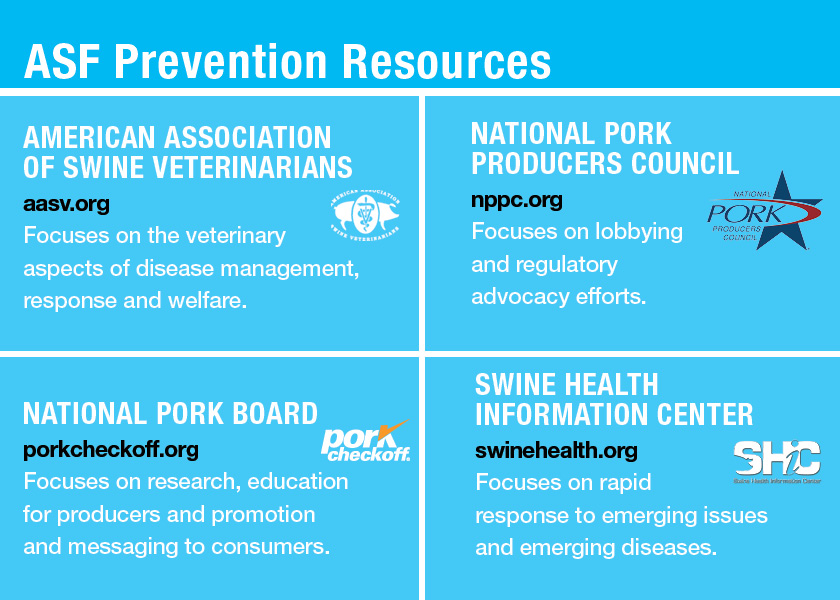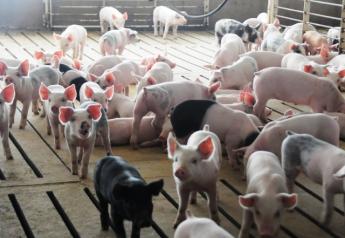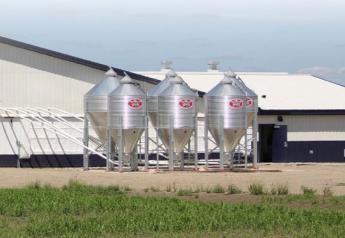It's Time to Batten Down the Hatches, Pork Industry Experts Say

Editor's Note: This is part three of a three-part series on African swine fever
In the past 40 years, the swine industry has made incredible progress by coming together to fight foreign animal disease (FAD) introduction from multiple angles.
Several days a week, if not every day, veterinarians from the National Pork Board, National Pork Producers Council (NPPC), Swine Health Information Center (SHIC) and American Association of Swine Veterinarians (AASV) are in communication about African swine fever (ASF) specifically. They are also in close contact with state pork associations and the North American Meat Institute which represents the packing industry.

Source: Farm Journal's PORK
SHIC executive director Paul Sundberg, DVM, says it’s not just the pork industry that’s uniting – government agencies such as USDA Animal and Plant Health Inspection Services, Department of Homeland Security and the U.S. Customs and Border Protection (CBP) – are closely collaborating in these efforts, too.
From sharing resources to providing information to help assess risk levels, the communication between the organizations is one of the most significant advancements that has occurred since ASF was first discovered in the Western Hemisphere.
“In the swine industry, we've always recognized each other's individual lanes and stayed in those lanes,” says Harry Snelson, DVM, executive director of AASV. “I think everybody has plenty of work to do and has done a good job over the years of recognizing their strengths and staying in those lanes.”
Each organization knows it’s audience and can target messages to best reach that audience, Snelson adds.
“That allows us to address the various stakeholders within the industry –producers, regulators, legislators, state or federal animal health officials, or research folks – probably better than any of the other species groups, the swine industry has a better handle on that,” Snelson says.
One example of success is NPPC’s efforts to keep CBP fully funded during the pandemic.
“We now have a conduit into CBP to really understand what they're doing,” says Liz Wagstrom, DVM, NPPC chief veterinarian. “We continue to push them for more metrics, more data. Every once in a while, I have to remind myself that I am not trained as a law enforcement agent. My training as a veterinarian makes me see risks, but they know how to take care of those risks.”
She believes the improved trust and regular communication is a step in the right direction to prevent ASF and if the worst were to happen and it would get into the U.S. swine herd, this collaboration will bolster a strong, united response.
Check for Cracks and Leaks
Bob Thaler, professor and Extension swine specialist at South Dakota State University, says the COVID-19 pandemic was a terrible wake-up call to the pork industry in more ways than one.
“We saw what that did with packing plant shutdowns, how it backed all the systems up and resulted in terrible consequences,” Thaler says. “We know if we got hit with ASF, it would be 100-fold of that pain we just dealt with.”
The loss of export markets that would accompany an ASF outbreak keeps U.S. pork leaders working hard to rally the entire industry to do their part.
“We need producers to become partners in the effort to keep ASF out of the country,” Sundberg says. “We can do everything possible to put walls around the borders from a CBP, USDA and organization standpoint to keep it away from the country. But without the partnership with producers on the farm, it's not likely to be successful. Producers need to internalize that message and become partners in the effort to keep it out.”
Webb says it starts with your own biosecurity plan. Make sure you have a plan in place and that your team is following the plan. Pay close attention to the key parts of those plans related to trying to exclude virus from a farm.
“Food for human consumption should never enter, be stored or eaten in areas where there is contact with pigs,” he says. “Farms need to double down and make sure that if people have been traveling internationally, they know where employees have been and they're abiding by the appropriate protocols for their return to live production. Take a close look at those open windows where a virus could enter your farm.”
Producers should also enroll in their state’s secure pork supply plan. Get your site-specific enhanced biosecurity plan and map ready. Then, register for your free AgView account and start working to upload locations and movements and secure pork supply documentation so that it's available to state animal health officials in the event that the U.S. gets a positive case of ASF.
The fight to keep ASF out of the U.S. is not just a local or state problem, it's a national problem for all of agriculture, Thaler says.
“We can't do it by ourselves. We've got to work together for a common good to make that happen,” Thaler says. “If you look at pseudorabies, it was gone in 2004 after it’s eradication became a national priority. It took producers, veterinarians, producer groups and government officials coming together to make that happen. Once the United States decides to do something and do it well, it's going to happen. It comes down to getting everyone on board and giving them the resources to do it.”
The past 40 years are a fabulous story of progress in swine health and FAD prevention, Sundberg agrees. Together, the industry is finding ways that ASF can get into the U.S. and one by one, closing those windows of opportunity.
“Collaboration is one of the ways that we’ve gotten to the progress,” Sundberg says. “Ultimately, I hope it’s successful. We've done a lot of work on closing windows for introduction of different diseases, but we’ve got to keep looking for more open windows.”
Read More from this Farm Journal's PORK's three-part series on ASF:
Close All the Windows to Keep ASF Out
ASF in the Western Hemisphere: What’s Different 40 Years Later?







